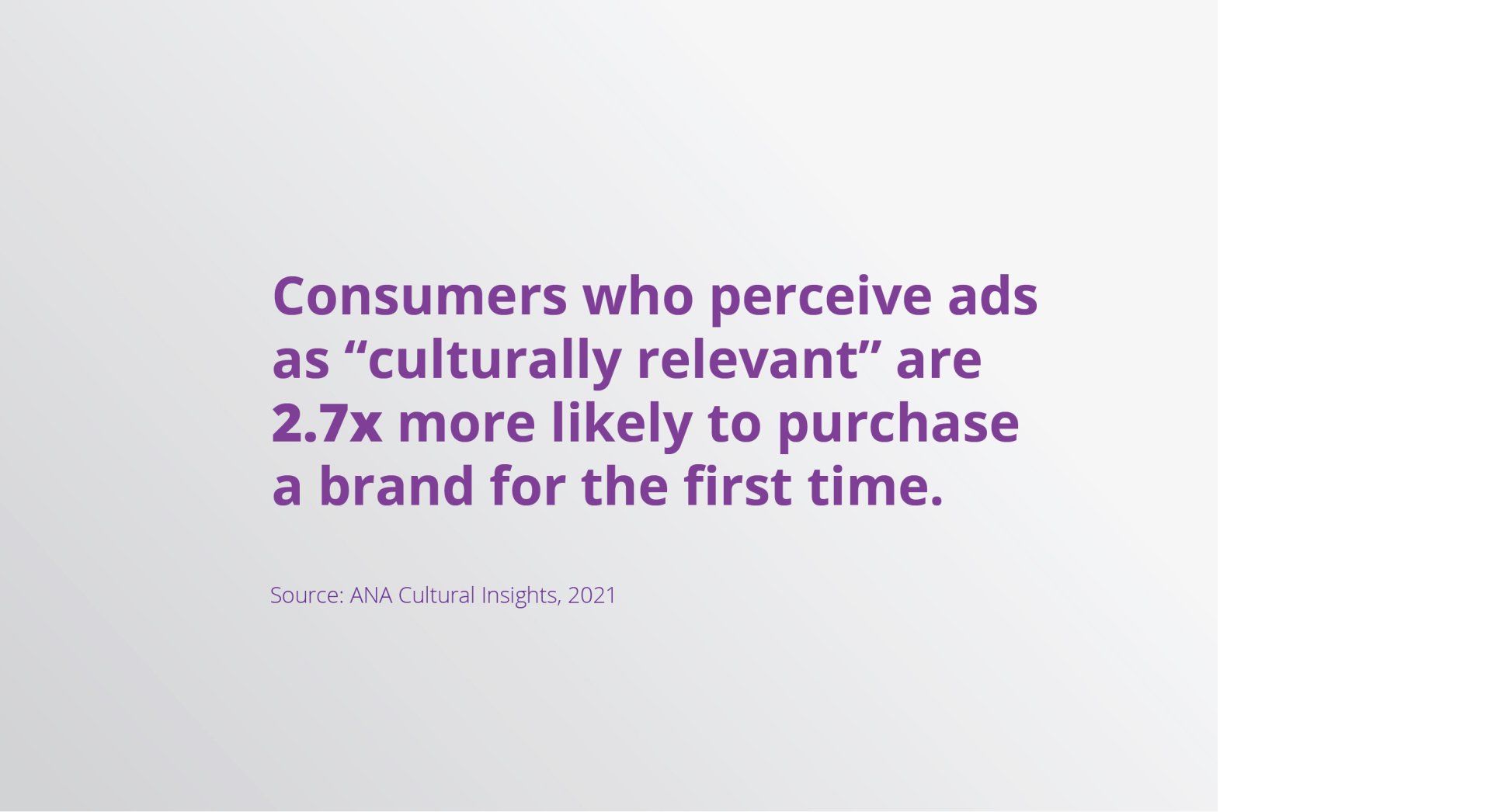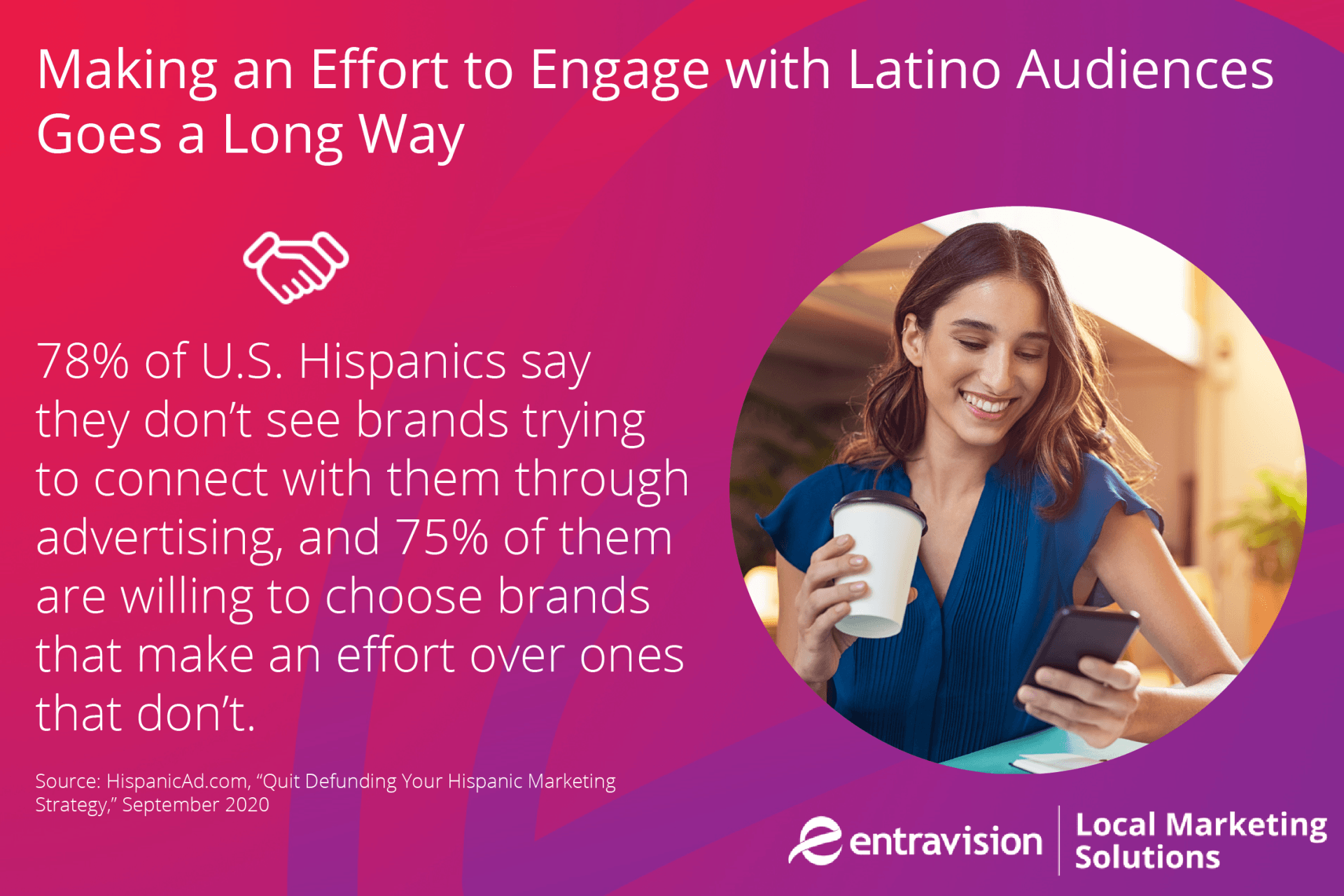How to Make Your Marketing More Inclusive
“Inclusive marketing” and “diversity and inclusion” may seem like the latest buzzwords, but these practices are here to stay -- especially if your business is looking to grow and form meaningful connections with consumers. Interested in learning more? This is the article for you!
In this post, we’ll be covering the following topics:
- What is Inclusive Marketing?
- Why Should You Make Your Marketing Inclusive?
- How to Get Started With Inclusive Marketing
- Know Your Audience -- Nuance is key
- Commit to Year-Round Inclusive Marketing Efforts
- Hire a Multicultural Marketing Agency to Help You Get it Right
Questions or comments?
Get in touch with us here!
What is Inclusive Marketing?
Inclusive marketing isn’t just about making sure diverse faces are on your marketing campaign. Instead, it’s about audiences of varying backgrounds feeling included in your marketing messaging and overall brand or business.
For example, it helps to consider the following questions:
- Are you tailoring your message to the specific demographic you’re reaching?
- Are you conveying your message authentically and without the use of stereotypes and cliches?
- Do you receive input or research from people of the demographic you’re trying to target, instead of making assumptions about their preferences?
- Is your marketing and online presence accessible and user-friendly for consumers?
Why Should You Make Your Marketing Inclusive?
Now that you have a better idea of what inclusive marketing is and isn’t, you may be wondering why it’s so important in the first place. These days, inclusive marketing is no longer a bonus or “nice to have” component. As the U.S. population continues to become more diverse, not including people of all backgrounds in your marketing is a faux paus that can have negative effects on your business in the long run.
For instance, in 2020, the majority of all Americans under seventeen years old were from a minority background, and a
“minority-majority” population is expected to take full effect by the mid-2040s. In other words, diversity and inclusion aren’t just temporary trends -- they’re mainstays as the population continues to grow and evolve.
Hispanic audiences in particular are a key growing population to reach, especially if your city is home to a large Latino population. Did you know that according to the U.S. Census Bureau, the
Hispanic population
will grow to 111.2 million by 2060 and will make up 28% of the U.S. population? While many companies are making an effort to make their businesses more inclusive for internal teams, it’s imperative that they also strive for the same externally via a diverse and inclusive consumer base.
Unfortunately, the majority of brands are spending small amounts on diversity and inclusion or not spending at all -- which negatively impacts their brand’s performance. A recent Nielsen study found that on average, the Return on Ad Spend for high D&I investment brands was more than 2 times larger than that of low D&I investment brands.
Additionally, Nielsen’s findings showed that advertisers not actively spending on Spanish Language networks had 39% lower ROAS than that of brands active in that market, regardless of their exact ad spend. The outcome is evident -- brands that had higher share of spend on diverse networks had higher Return on Ad Spend in the study.
It pays to focus on diversity and inclusion!
How to Get Started With Inclusive Marketing
For many brands and businesses, it’s one thing to know what inclusive marketing is, but a whole other challenge to actually implement these practices as a part of their overall marketing strategy. Understandably so, it can be daunting to take on the challenge in fear of slipping up or coming across as inauthentic. No need to fear -- read our tips below to learn how to make more informed inclusive marketing decisions.
Know Your Audience -- Nuance is key
If there’s one thing you need to take away from how to successfully implement inclusive marketing practices, it’s that nuance is everything. When inclusive marketing campaigns are done right, they result in consumers feeling welcome, understood, and included. When campaigns miss the mark, consumers can feel offended, stereotyped, or uninterested in the business.
Nobody wants to feel like a number or stereotype. By taking the time to get to know your audience, you can ensure that you’re doing the work to truly understand their needs, values, and culture in order to reach them effectively.
Check out our recommended reading below for more information on this topic!
- Are Your Digital Marketing Campaigns Diverse and Inclusive?
- 5 Reasons Your Business Needs to Be Running Multicultural Marketing Campaigns
- 5 Ways to Implement Inclusive Marketing Practices in 2021
- Why is Multicultural Marketing Important?
A big part of knowing your audience also means knowing which platforms to reach them on and how to make your online presence and digital marketing more user-friendly.
For instance:
- Have you done the research to know which digital platforms are preferred among your target audience?
- Have you verified best practices to make your website easy to navigate for all consumers?
- Do your videos have captions for Deaf or hard of hearing consumers?
All of these questions and more should be answered if you truly aim to be more inclusive in your marketing practices.
Take a look at some successful Hispanic marketing campaigns in action by checking out our case studies!
Commit to Year-Round Inclusive Marketing Efforts
Having an inclusive marketing campaign every once in a while isn’t going to cut it. If you want to genuinely reach diverse audiences and make a lasting impact, you have to go the distance. Consumers are increasingly selective and can see through haphazard attempts of brands trying to connect with them.
No matter your intentions, if you’re only reaching Hispanic audiences during Hispanic Heritage Month, only reaching Black audiences during Black History month, or only reaching LGBTQ+ audiences for Pride Month, these audiences can see through shallow attempts of brands that claim to care about them.
That being said, fully committing by developing long-term inclusive marketing strategies is well worth the effort in ensuring your business will create lasting connections with consumers.
Hire a Multicultural Marketing Agency to Help You Get it Right
It’s no secret that a lot goes into creating successful inclusive marketing campaigns, and it can be tricky for businesses to do on their own. For this reason, many brands and businesses choose to hire a multicultural marketing agency to get the expert help they need.
If you’re looking to get started, or simply have questions about how the process works, feel free to contact one of our expert digital marketing consultants or find a location near you.
General questions or comments are welcome too -- contact us here. We’d love to hear from you!
















